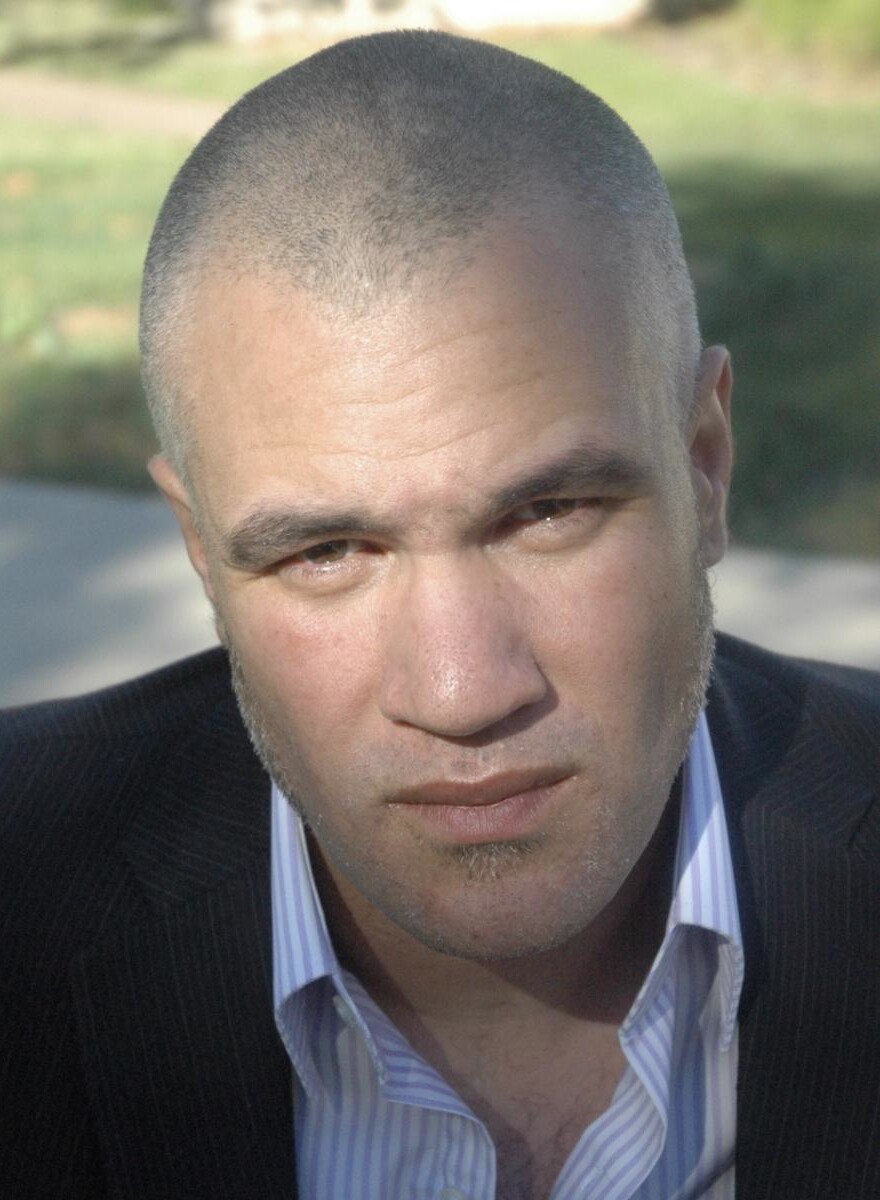Growing up in Philadelphia, Mat Johnson lived mostly with his mother in a black neighborhood. The son of an African-American mother and an Irish-American father, his skin was so light that he might have passed for white. But being biracial meant only one thing back in the '70s: "Um, it meant: black," Johnson says with a laugh. "There wasn't a lot of ambiguity there. I didn't hear the world biracial or didn't think of myself as biracial. And when I did hear that, I reacted to it defensively. I thought it was just black people of mixed heritage who were just trying to run away from blackness."
Johnson was born three years after Loving Day — the historic 1967 Supreme Court decision which made interracial marriage legal. His new novel, Loving Day, is a funny, sometimes absurd look at what it means to be mixed race in this country.
These days, Johnson has a more nuanced way to describe his racial identity. He says he is a mixed person of African-American descent. But he also uses another, more loaded word, to describe himself: mulatto.
"A lot mixed people hate that word," Johnson says. "People in general hate that word. A lot of times they think it references mule, but it's a lot older than that. It has Arabic roots. And historically that's been the term often used for African Americans, first generation, who are mixed. So to me, it connects me to my past. But I think those identities — mixed identity and African-American identity — can co-exist."
Johnson has a lot in common with the main character in his novel. Warren Duffy is also of Irish-African descent. He also grew up in Philadelphia, lived with his mother in a black neighborhood and like Johnson, Warren is very light skinned. Early in the book, he calls himself a "racial optical illusion."
As the book begins, Warren is confronted by a teenage girl who turns out to be his daughter. Tal was raised by her Jewish mother who has since died and her grandfather can no longer take care of her. Tal has never thought of herself as racially mixed, much less black. To help her to explore her new racial identity Warren enrolls his daughter in a school which turns out to be more like a mixed race commune.
"A kind of bi-racial militant separatist group is the quickest way to define it," Johnson says. "It's all people of European and African heritage, first generation who are kind of violently — not violently, but emotionally violently — trying to get this balance between their African-American heritage and their European-American heritage."
Melange, as the commune is called, is full of odd characters and misfits all trying to come to terms with their racial identities. The "oreos" are white on the inside and black on the outside. The "sunflowers," including Warren, are white on the outside, black inside. Ideally they're supposed to learn to accept both sides of themselves. In reality, they follow a great American tradition when it comes to race: self-segregation.
Balance is incredibly difficult. Balance is walking along a fence in bare feet and trying not to fall off.
"The fact that they're already pulling into gangs basically shows how well it's going," Johnson says. "This idea — we all should have balance in our lives and the balance is incredibly important and often times the key to some sort of serenity. However balance is incredibly difficult. Balance is walking along a fence in bare feet and trying not to fall off."
Warren does manage to steer his daughter into understanding what it means to be a mixed race woman — and he also manages to fall in love, with a woman who challenges his own ideas about racial identity.
Most African Americans, Johnson says, do have some white heritage though no one really wants to talk about that. But he says there is a growing movement of people who do want to talk about what it means to be bi-racial.
"Most people of mixed heritage they grow up minorities in their own house," he says. "Unless they have many, many siblings, they are the only or one of the only people of their exact ethnic makeup. And so, to me, this idea with Loving Day was a chance to explore a group identity, because most of the work that has been done on mixed experience just focuses on the 'I.' And so I think the one thing I really wanted to do with this book was focus on the 'we' and what does that 'we' mean."
Writing this book was scary, says Johnson, because it felt like he was publicly coming out as "mixed identified" and he knows some people won't get that — and some won't like it. But he says needed to do it ... for himself.
Copyright 2023 NPR. To see more, visit https://www.npr.org.



